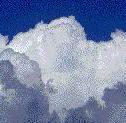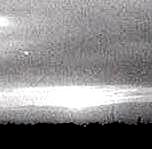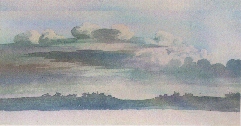 |
 |
| Home | Welcome | What's New | Site Map | Glossary | Weather Doctor Amazon Store | Book Store | Accolades | Email Us |
 | ||||||||||||||||||||||
Luke Howard:
|
||||||||||||||||||||||
 | Cumulus (Latin for heap) | "Convex or conical heaps, increasing upward from a horizontal base -- Wool bag clouds." |
 | Stratus (Latin for layer) | "A widely extended horizontal sheet, increasing from below." |
 | Cirrus (Latin for curl of hair) | "Parallel, flexuous fibres extensible by increase in any or all directions." |
To denote "a cloud in the act of condensation into rain, hail or snow," he added a fourth category:
 | Nimbus (Latin for rain) | "A rain cloud -- a cloud or systems of clouds from which rain is falling." |
According to Howard: "While any of the clouds, except the nimbus, retain their primitive forms, no rain can take place; and it is by observing the changes and transitions of cloud form that weather may be predicted."
Clouds could also alter their forms, thus, Howard reasoned, when cumulus clouds bunched together so that they crowded the sky, they became:
Cumulo-stratus:
"The cirro-stratus blended with the cumulus, and either appearing intermixed with the heaps of the latter, or super-adding a widespread structure to its base."
Cirro-cumulus:
"Small, well defined, roundish masses increasing from below."
and
Cirro-stratus:
"Horizontal or slightly inclined masses, attenuated towards a part or the whole of their circumference, bent downward or undulated, separate, or in groups, or consisting of small clouds having these characters."
He would later write of the classification system:
"The names ... were intended as arbitrary terms for the structure of clouds, and the meaning of each was carefully fixed by a definition ... (Local terms) take away from the nomenclature its present advantage of constituting ... an universal language, by means of which the intelligent of every country may convey to each other their ideas without the necessity of translation. And the more this facility of communication can be increased, by our adopting by consent uniform modes, terms, and measures for our observations, the sooner we shall arrive at a knowledge of the phenomena of the atmosphere in all parts of the globe, and carry the science to some degree of perfection."
Howard's work made a big impression on those interested in the sky, particularly after his papers were reprinted in Thomas Forster's successful Researches About Atmospheric Phaenomenae in 1813. The classification system quickly gained wide acceptance both in Britain and other countries. Among its biggest supporters was the German poet, philosopher and scientist Johann Wolfgang von Goethe. Goethe used the Howard classification in his weather journals and eventually dedicated four poems to Howard and his Clouds.
Goethe wrote:
[Howard] "was the first to hold fast conceptually the airy and always changing form of clouds, to limit and fasten down the indefinite, the intangible and unattainable and give them appropriate names."
Howard's work on clouds also appears to have influenced many Romantic Era painters, notably masters Joseph M.W. Turner, and John Constable of England and Caspar David Friedrich (through Goethe) in Germany. They used Howard's descriptions to depict clouds with greater detail and accuracy. Turner first learned of Howard's work through the second edition of Forster's book in 1821, and it inspired him to paint a series of cloud studies. (Howard also produced a series of his own watercolours depicting the various clouds.)

Later, meteorologists would add an additional category to define the everyday clouds: alto meaning middle. And, like the Linnean system, some cloud forms would be given "species" designating names such as: Cumulus congestus, Cirrus uncinus, Stratus nebulosus.
Although the cloud classification system was Luke Howard's greatest and most enduring achievement, it was not his only one in the field. In fact, in recognition of his contributions to meteorology, the Royal Society elected the amateur meteorologist a Fellow in 1821.
Nor was "On The Modification Of Clouds" Howard's first paper on the atmosphere. In 1800 he had presented a paper on the "Average Barometer" and in 1802 he delivered "Theories of Rain" to the Askesian Society. In 1806 he started his Meteorological Register, which was regularly published in Athenaeum Magazine beginning in 1807.
Howard's study The Climate of London, the first book on urban climatology, was initially published as two volumes during 1818-19, with a second edition of three volumes released in 1833. In it, Howard recognized that cities could significantly alter meteorological elements. One he termed "city fog:"
"...the sky, where any light pervaded it, showed the aspect of bronze. Such is, occasionally, the effect of the accumulation of smoke between two opposite gentle currents, or by means of a misty calm. I am informed that the fuliginous cloud was visible, in this instance, for a distance of forty miles." -- 10 January 1812
Later on 16 January 1826, he would observe another instance of city fog or, as it is now called smog:
"At one o'clock yesterday afternoon the fog in the city was as dense as we ever recollect to have known it. Lamps and candles were lighted in all shops and offices, and the carriages in the street dared not exceed a foot pace. At the same time, five miles from town the atmosphere was clear and unclouded with a brilliant sun."
Howard was also to discover that the urban center was warmer at night than the surrounding countryside, a condition we now call the urban heat island. Under a table presented in The Climate of London (1820), of a nine-year comparison between temperature readings in London and in the country, he commented: "Night is 3.70° warmer and day 0.34° cooler in the city than in the country." He attributed this difference to the extensive use of fuel in the city.
Howard's Seven Lectures In Meteorology were initially given in 1817 and later published as the first meteorological textbook in 1837. Howard also appears to be the first to investigate the influence of the declination of the moon on weather cycles, publishing several papers around 1840. Finally, in 1847 he published Barometrographia.
It also appears that Howard had a rudimentary understanding of what we now know as weather fronts, a concept that did not become well developed until the 1920s. In The Climate of London (1833), he presented a detailed description of cloudiness and precipitation changes which accompanied the replacement of an warm air mass with a colder one, and vice versa. He wrote:
"...if fine hail should fall after a period of damp, sultry weather during which thunderclouds with lightning gather gradually, to be followed by large hail and, finally, rain, and it after this a cold westerly or northerly wind begins to blow, then I would be quite certain that the latter, as a cold body, had suddenly replaced en masse the warm air which was there before the beginning of the thunderstorm.";
For a man who was a successful businessman, devote family man, and pillar in the Society of Friends (the Quakers), Luke Howard always found time to continue his work as a natural philosopher focusing on meteorology. As he remarked late in his life: "meteorology was my real penchant."
"The sky too belongs to the Landscape. The ocean of air in which we live and move, in which the bolt of heaven is forged, and the fructifying rain condensed, can never be to the zealous Naturalist a subject of tame and unfeeling contemplation,"
Howard wrote.
In April of 2002, the British Meteorological Office honoured the memory of Luke Howard by posting a plaque at the north London home at 7 Bruce Grove,Tottenham, where Howard spent his final years. "We are eternally grateful that Luke Howard came up with such an easy and straightforward way of naming clouds," said Mr Michael Fish of the Met Office at the ceremony. Added Emily Cole, Blue Plaques Historian at English Heritage: "Luke Howard's work is of key significance to meteorologists worldwide, and deserves to be better known."
Each time we look out the window and remark on the billowing cumulus, the dull stratus or lacy cirrus, we further honour the name of Luke Howard. He truly deserves the title bestowed by Dr John Day: Godfather of the Clouds.
Have you lost contact with someone that you wish that you still had contact with? Try a People Search for that lost person. Many kinds of People Searches available for your use. Don't lose contact again with a search for people that can find almost anyone. |
 |
To Purchase Notecard, |
Now Available! Order Today! | |
 |
 |
NEW! Now |
The BC Weather Book: |


